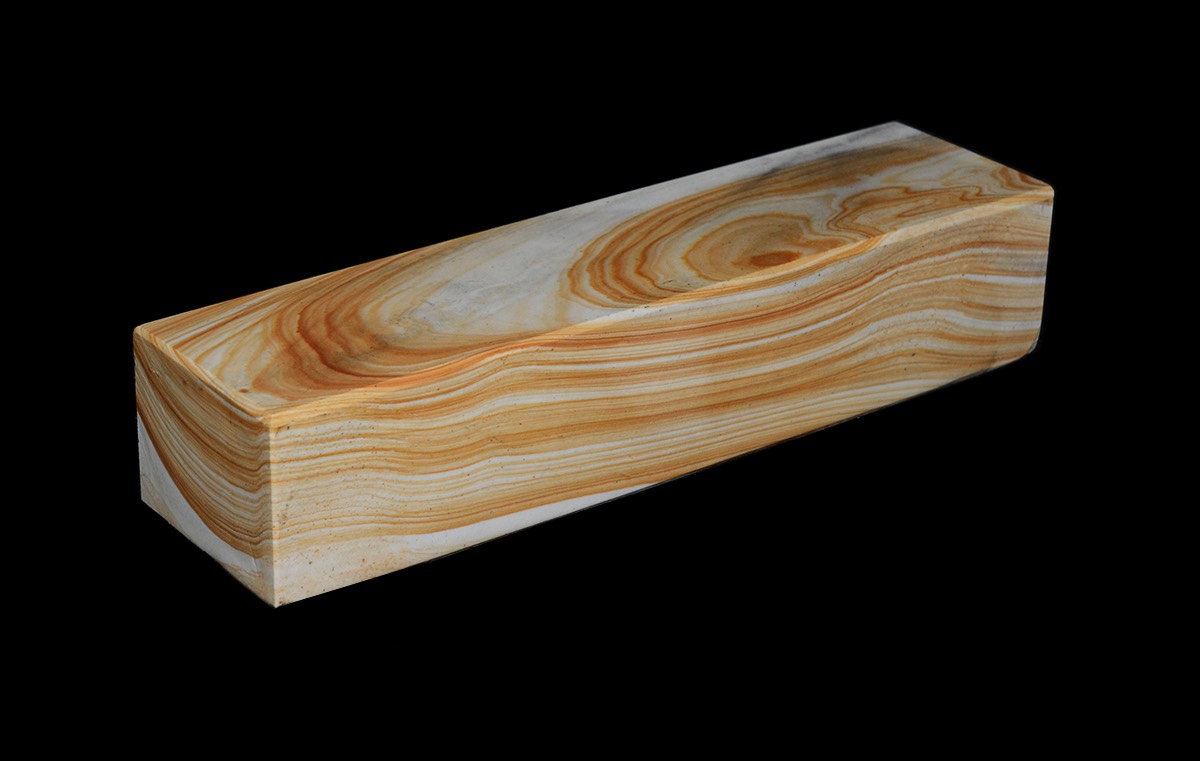
In a modern sword polishing progression, Chu Nagura-do follows Kaisei-do, and precedes Koma Nagura-do; it is the next to last stone before the final finishing process begins. The Chu Nagura used by Togishi are often quite large and have rounded working surfaces.
For sharpening straight razors though, one might wonder when to use Chu or why even bother with it? After all – we already have Botan, Tenjyou, Mejiro and Koma; don’t those Nagura cover the bases?
The thing is this; honing, or sharpening, is not as linear as one might think. Steel comes in myriad types, styles and formulations with an equal number hardness ratings, and so on. Our bevels do not have perfect geometry like the drawings we see indicate, and our Awasedo are not as perfectly flat as we want to believe. Add in a boatload of human-generated pressure, style and technique variables and we very nearly have an unquantifiable sharpening stew.
This is where Western thinking has to go out the window.
Chu, is an alternative first and a regular player second. It is not a cure-all and it is not an answer to everything stone. What it is, to me; a something that I pull out of the drawer from time to time, to keep the honing thoughts in my head moving smoothly; a mental lubrication of sorts.
It’s also an option when a razor or stone is acting finicky; that happens sometimes, and using a non-graded and undefined Nagura helps me get past the tendency to rely on numbers to solve every equation.
So – where does it fit into a progression? For honing razors - generally – I’ll use Chu before or right after Botan. Sometimes I’ll use it instead of Tenjyou and/or Mejiro. Occasionally I’ll use Chu instead of all 3 and then move to Koma or Tomo Nagura on the Honzan. It all depends on feel, mood and what the stone is telling me.
Chu Nagura is quarried at a few different locations. The pieces in the photo above were quarried in Aichi Prefecture, but they are not from the same mine that produces Mikawa Shiro Nagura. Each of the typical Asano Stamped Mikawa Shiro Nagura is specific to a particular seam in the mine, and Iwasaki’s illustration that names the strata does not show a layer called ‘Chu’.
